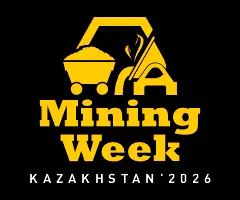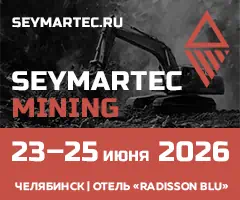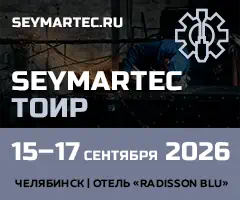Development of approaches to monitoring the tension and shear fractures in rock supports to assess the risk of their failure
 V.A. Shekov1, G.N. Kolesnikov2
V.A. Shekov1, G.N. Kolesnikov2
1 Institute of Geology, Karelian Research Centre of the Russian Academy of Sciences, Petrozavodsk, Russian Federation
2 Petrozavodsk State University, Petrozavodsk, Russian Federation
Russian Mining Industry №3 / 2025 p.112-117
Abstract: The article describes the mechanism of occurrence and gradual development of the tension fractures in the surface layer and the shear fractures in the core of the rock supports (pillars) under uniaxial compression. This model differs from the existing ones because it identifies two stages of the failure process: during the first stage, tensile stresses initiate fracture formation, and during the second stage, shear stresses cause shear fractures. This approach does not rely on preliminary assumptions about the presence or absence of fractures before the deformation begins, which expands the scope of its application. Our previous studies have shown that the tensile stresses in the core of the pillar negatively correlate with the thickness of the surface layer containing newly formed radial cracks. When the tensile stresses do not exceed the tensile strength, the thickness of this layer does not increase, which determines the transition to the second stage of failure. During the second stage, tangential stresses continue to increase, which causes the shear failure of the pillar core. Case study shows that after the first stage of failure, the pillar retains its load-bearing capacity only partially, since the damage significantly reduces the area of its cross-section, for example, to 42% of the original value in the example considered. The results of the modeling are consistent with the known studies and conclusions that when designing rock supports it is extremely important to consider the gradual failure and reduction in the bearing capacity during their operation to ensure the safety of mining operations. The risk indicators of the rock pillar failure are vertical tension fractures, spalling and transformation into the hourglass shape. The shear fractures that develop during the second stage and are oriented at angles close to the internal friction angle are more hazardous. The simulation results are consistent with the known data. However, variability of the physical and mechanical properties of rocks and the external influences to which they are exposed indicates the need for further research on this topic.
Keywords: rocks, tension fractures, surface layer, spalling, bearing capacity, fracture risk, safety of mining operations
For citation: Shekov V.A., Kolesnikov G.N. Development of approaches to monitoring the tension and shear fractures in rock supports to assess the risk of their failure. Russian Mining Industry. 2025;(3):112–117. (In Russ.) https://doi.org/10.30686/1609-9192-2025-3-112-117
Article info
Received: 25.02.2025
Revised: 10.04.2025
Accepted: 21.04.2025
Information about the authors
Vitali A. Shekov – Cand. Sci. (Eng.), Deputy Director for Research, Institute of Geology, Karelian Scientific Center, Russian Academy of Sciences, Petrozavodsk, Russian Federation; https://orcid.org/0000-0003-2781-2706; e-mail: This email address is being protected from spambots. You need JavaScript enabled to view it.
Gennady N. Kolesnikov – Dr. Sci. (Eng.), Professor, Institute of Forestry, Mining and Construction Sciences, Petrozavodsk State University, Petrozavodsk, Russian Federation; https://orcid.org/0000-0001-9694-0264; e-mail: This email address is being protected from spambots. You need JavaScript enabled to view it.
References
1. Рыбин В.В., Константинов К.Н., Каган М.М., Панасенко И.Г. Принципы организации комплексной системы мониторинга устойчивости объектов горнодобывающего предприятия. Горный журнал. 2020;(1):53–57. https://doi.org/10.17580/gzh.2020.01.10 Rybin V.V., Konstantinov K.N., Kagan M.M., Panasenko I.G. Methodology of integrated stability monitoring in mines. Gornyi Zhurnal. 2020;(1):53–57. (In Russ.) https://doi.org/10.17580/gzh.2020.01.10
2. Голик В.И., Вернигор В.В., Келехсаев В.Б., Майстров Ю. Подземная разработка рудных месторождений с сохранением земной поверхности. Горные науки и технологии. 2018;(3):3–13. https://doi.org/10.17073/2500-0632-2018-3-3-13 Golik V.I., Vernigor V.V., Kelekhsaev V.B., Mystrov Yu. Underground mining of ore deposits while keeping the earth’s surface. Mining Science and Technology (Russia). 2018;(3):3–13. (In Russ.) https://doi.org/10.17073/2500-0632-2018-3-3-13
3. Сизин П.Е., Вознесенский А.С., Кидима Мбомби Л.К. Влияние длины трещин со случайными параметрами на электрическую проводимость горных пород. Горные науки и технологии. 2023;8(1):30–38. https://doi.org/10.17073/2500-0632-2022-07-11 Sizin P.E., Voznesenskii A.S., Kidima-Mbombi L.K. Influence of random parameter joint length on rock electrical conductivity. Mining Science and Technology (Russia). 2023;8(1):30–38. https://doi.org/10.17073/2500-0632-2022-07-11
4. Калашник А.И. Влияние водопритоков на прочностные характеристики пород Ловозерского редкометалльного месторождения. Горные науки и технологии. 2024;9(4):387-394. https://doi.org/10.17073/2500-0632-2023-09-160 Kalashnik A.I. Effect of water inflows on the strength characteristics of the Lovozero rare-metal deposit rocks. Mining Science and Technology (Russia). 2024;9(4):387-394. https://doi.org/10.17073/2500-0632-2023-09-160
5. Svetov S.A., Chazhengina S.Y., Stepanova A.V. Paleoproterozoic variolitic lavas from the onega basin, fennoscandian shield: Mineralogy, geochemistry and origin. Minerals. 2023;13(10):1320. https://doi.org/10.3390/min13101320
6. Svetova E.N., Svetov S.A., Lavrov O.B. Agate mineralization in paleoproterozoic organic carbon-rich sedimentary rocks of the onega basin (NW Russia): Insights into genesis. minerals. 2024;14(5):447. https://doi.org/10.3390/min14050447
7. Cao S., Xue G., Yilmaz E., Yin Z., Yang F. Utilizing concrete pillars as an environmental mining practice in underground mines. Journal of Cleaner Production. 2021;278:123433. https://doi.org/10.1016/j.jclepro.2020.123433
8. Жабко А.В. Фундаментальные проблемы практической геомеханики и возможные пути их преодоления. Известия Уральского государственного горного университета. 2018;(4):98–107. Режим доступа: https://iuggu.ru/download/2018-4-52-Zhabko.pdf (дата обращения: 07.02.2025). Zhabko A.V. Underlying problems of practical geomechanics and possible ways to overcome them. News of the Ural State Mining University. (In Russ.) Available at: https://iuggu.ru/download/2018-4-52-Zhabko.pdf (accessed: 07.02.2025).
9. Вознесенский А.С., Кидима-Мбомби Л.К. Формирование синтетических структур и текстур горных пород при их моделировании в среде COMSOL Multiphysics. Горные науки и технологии. 2021;6(2):65–72. https://doi.org/10.17073/2500-0632-2021-2-65-72 Voznesensky A.S., Kidima-Mbombi L.K. Formation of synthetic structures and textures of rocks when simulating in COMSOL Multiphysics. Mining Science and Technology (Russia). 2021;6(2):65–72. https://doi.org/10.17073/2500-0632-2021-2-65-72
10. Jing G., Montanari P.M., Lacidogna G. Study of Time-frequency domain of acoustic emission precursors in rock failure during uniaxial compression. Signals. 2024;5(1):105–117. https://doi.org/10.3390/signals5010006
11. Cai M., Kaiser P.K., Tasaka Y., Maejima T., Morioka H., Minami M. Generalized crack initiation and crack damage stress thresholds of brittle rock masses near underground excavations. International Journal of Rock Mechanics and Mining Sciences. 2004;41(5):833–847. https://doi.org/10.1016/j.ijrmms.2004.02.001
12. Esterhuizen G.S., Dolinar D.R., Ellenberger J.L. Pillar strength in underground stone mines in the United States. International Journal of Rock Mechanics and Mining Sciences. 2011;48(1):42–50. https://doi.org/10.1016/j.ijrmms.2010.06.003
13. Zheng Q., Qian J., Zhang H., Chen Y., Zhang S. Velocity tomography of cross-sectional damage evolution along rock longitudinal direction under uniaxial loading. Tunnelling and Underground Space Technology. 2024;143:105503. https://doi.org/10.1016/j.tust.2023.105503
14. Ma K., Peng Y., Liao Z., Wang Z. Dynamic responses and failure characteristics of the tunnel caused by rockburst: An entire process modelling from incubation to occurrence phases. Computers and Geotechnics. 2024;171:106340. https://doi.org/10.1016/j.compgeo.2024.106340
15. Esterhuizen G.S., Tyrna P.L., Murphy M.M. A Case study of the collapse of slender pillars affected by through-going discontinuities at a limestone mine in Pennsylvania. Rock Mechanics and Rock Engineering. 2019;52(12):4941–4952. https://doi.org/10.1007/s00603-019-01959-6
16. Rafiei Renani H., Martin C.D. Modeling the progressive failure of hard rock pillars. Tunnelling and Underground Space Technology. 2018;74:71–81. https://doi.org/10.1016/j.tust.2018.01.006
17. Zhou J., Zhang Y., Li C., He H., Li X. Rockburst prediction and prevention in underground space excavation. Underground Space. 2023;14:70–98. https://doi.org/10.1016/j.undsp.2023.05.009
18. Zhang Y., Qi H., Li C., Zhou J. Enhancing safety, sustainability, and economics in mining through innovative pillar design: A state-of-the-art review. Journal of Safety and Sustainability. 2024;1(1);53–73. https://doi.org/10.1016/j.jsasus.2023.11.001
19. Kaiser P.K., Moss A. Deformation-based support design for highly stressed ground with a focus on rockburst damage mitigation. Journal of Rock Mechanics and Geotechnical Engineering. 2022;14(1):50–66. https://doi.org/10.1016/j.jrmge.2021.05.007
20. Ma J., Li T., Shirani Faradonbeh R., Sharifzadeh M., Wang .J, Huang Y. et al. Data-driven approach for intelligent classification of tunnel surrounding rock using integrated fractal and machine learning methods. Fractal and Fractional. 2024;8(12):677. https://doi.org/10.3390/fractalfract8120677
21. Bieniawski Z.T. Engineering classification of jointed rock masses. Transaction of the South African Institution of Civil Engineers. 1973;15:335–344. Available at: https://journals.co.za/doi/pdf/10.10520/AJA10212019_17397 (accessed: 12.05.2024).
22. Hoek E., Martin C.D. Fracture initiation and propagation in intact rock – A review. Journal of Rock Mechanics and Geotechnical Engineering. 2014;6(4):287–300. https://doi.org/10.1016/j.jrmge.2014.06.001
23. Fakhimi A., Hemami B. Axial splitting of rocks under uniaxial compression. International Journal of Rock Mechanics and Mining Sciences. 2015;79:124–134 https://doi.org/10.1016/j.ijrmms.2015.08.013
24. Perras M.A., Diederichs M.S. A review of the tensile strength of rock: Concepts and testing. Geotechnical and Geological Engineering. 2014;32:525–546. https://doi.org/10.1007/s10706-014-9732-0
25. Askaripour M., Saeidi A., Mercier-Langevin P., Rouleau A. A review of relationship between texture characteristic and mechanical properties of rock. Geotechnics. 2022;2(1):262–296. https://doi.org/10.3390/geotechnics2010012
26. Hong Z., He M., Ding M., Yu X., He L., Zhang Y., Wen Z. A direct measurement method for the uniaxial tensile strength of rock. Buildings. 2024;14(12):3903. https://doi.org/10.3390/buildings14123903
27. Hu X., Lacidogna G., Xie N., Montanari P.M., Gong X. Tensile microcracking behavior of granites after high temperature treatment by considering the effect of grain size and mineralogical composition. Rock Mechanics and Rock Engineering. 2024;57(12):10583–10609. https://doi.org/10.1007/s00603-024-04108-w
28. Кузьмин С.В., Шнайдер И.В., Кыштымов И.В. Выявление опасных зон при проходке подготовительных выработок в сложных горно-геологических условиях. Горный журнал. 2024;(1):45–49. https://doi.org/10.17580/gzh.2024.01.07 Kuzmin S.V., Shnaider I.V., Kyshtymov I.V. Detection of hazardous zones in development headings in difficult geological conditions. Gornyi Zhurnal. 2024;(1):45–49. (In Russ.) https://doi.org/10.17580/gzh.2024.01.07
29. Shekov V., Kolesnikov G. Modeling the conditions of occurrence and state of radial cracks in rock specimens under axial compression with lateral pressure. Applied Sciences. 2024;14(24):11552. https://doi.org/10.3390/app142411552
30. Хакимов Ш.И., Уринов Ш.Р. Подэтажная система с искусственными целиками из твердеющей закладки для разработки жил в сложных геомеханических условиях. Горные науки и технологии. 2021;6(4):252–258. https://doi.org/10.17073/2500-0632-2021-4-252-258 Khakimov Sh.I., Urinov Sh.R. Sublevel stoping with applying artificial hardening stowing pillars for extraction of veins in complicated geotechnical conditions. Mining Science and Technology (Russia). 2021;6(4):252–258. (In Russ.) https://doi.org/10.17073/2500-0632-2021-4-252-258
31. Zhu C., Huang M., Cai Q., Zuo Y., Tang S., Yin Q. Complex rock mechanics problems and risk prevention solutions. Applied Sciences. 2025;15(2):755. https://doi.org/10.3390/app15020755




